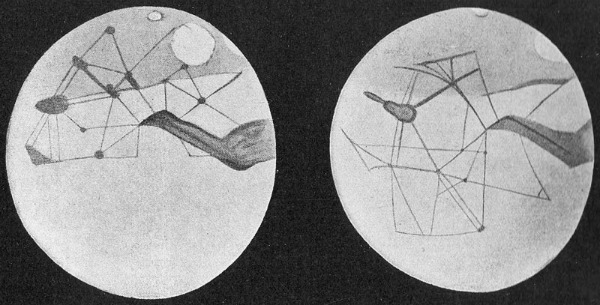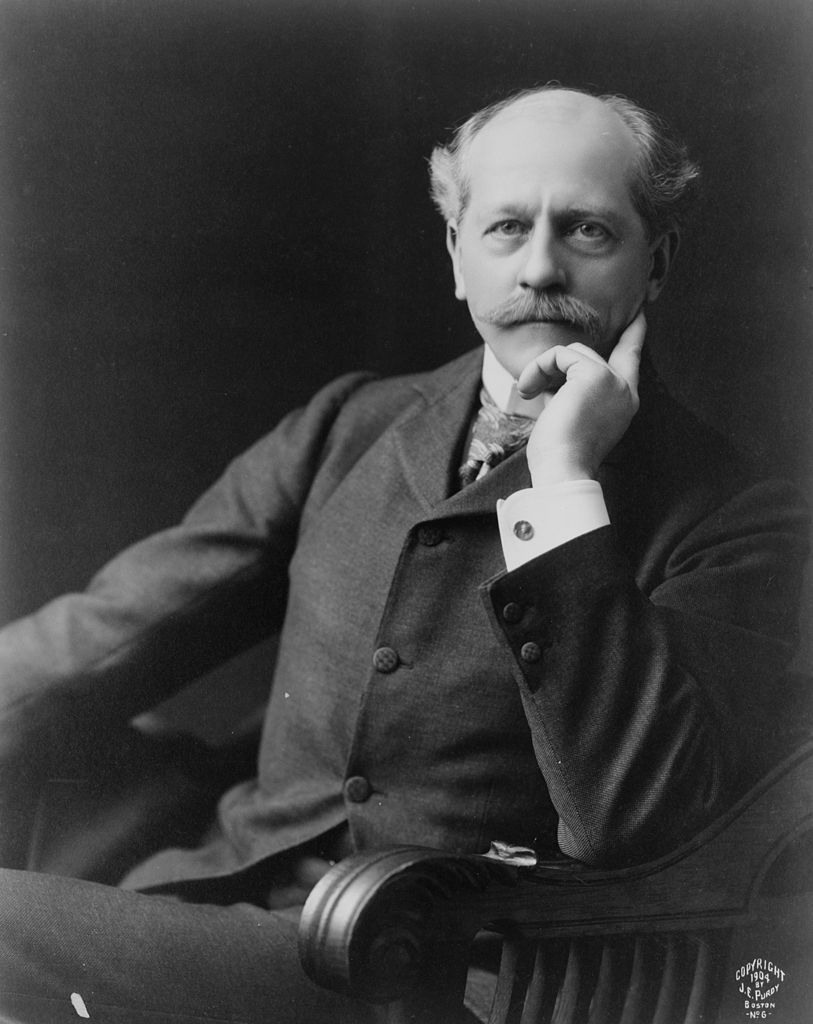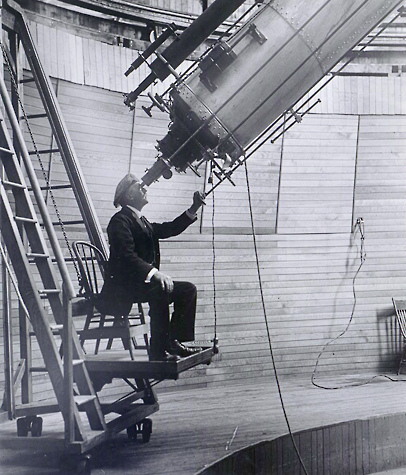Percival Lowell Biography

From the study of Mars to the prediction of Pluto to the building of the observatory that bears his name, Percival Lowell enthusiastically dove headlong into the study of astronomy. Let's learn more about the cultured businessman whose sudden attraction to the red planet led him into a love affair with the worlds beyond our own.
Early life
Percival Lawrence Lowell was born on March 13, 1855, to a prominent, wealthy Bostonian family. Son of Augustus and Katherine Bigelow Lowell, young Percival attended Harvard University and graduated in 1876 with a Bachelor of Arts in mathematics. At his graduation, he gave a speech on the formation of the solar system that indicated his early interest in astronomy. (His brother, Abbott Lawrence Lowell, later became president of Harvard.)

After college, Lowell worked in his family's textile business. In 1882, a lecture on Japan inspired him to travel to the Far East. He served as a foreign secretary to the Korean Special Mission, part of the first Korean diplomatic mission, in 1883. He wrote a number of books on the Far East.
In 1908, Lowell married Constance Savage Keith. They had no children.
The Mars bug
In the 1890s, Lowell learned about the discovery of "canalis" on Mars by Italian astronomer Giovanni Schiaparelli. Schiaparelli was reporting on channels crisscrossing the surface of the red planet, but the English translation of "canals" fired up excitement in Lowell.
Determined to be prepared for the Martian opposition in 1894, when the red planet drew closest to Earth, Lowell decided to build an observatory. In search of the ideal place to study Mars, he selected Flagstaff, Arizona, where the high altitude, thin atmosphere and remote location would give him a good view of the planet. There, he built Lowell Observatory on Mars Hill, where he sketched the surface of Mars as it drew near. What he found — or thought he found — electrified him.
Soon after his observations, Lowell announced his discovery of canals and oases on Mars. The long straight lines he sketched and described were not natural features but channels of water cut by a dying civilization, he claimed. Variations in brightness were caused by increased vegetation as water flow increased throughout the year.
The idea of intelligent beings on Mars quickly caught on in the public imagination, fueled by Lowell's abundant enthusiasm. He delivered series of lectures on the canals and the society that constructed them, as well as writing three books — "Mars" (1895), "Mars and Its Canals" (1906), and "Mars As the Abode of Life" (1908) — and a slew of articles on the red planet.
But the canals that Lowell emphatically insisted he saw could not be observed by other scientists, though the amateur astronomer insisted that such observations depended heavily on viewing conditions. Lowell had found evidence of water vapor, but this result was also unable to be duplicated. Nor could astronomers find any sign of intelligent life — or life in any form. The atmosphere was too thin, the gravity too low.
Lowell's canals were definitively disproven by NASA's Mariner missions. In 1965, Mariner 4 took close-up pictures of Mars, and in 1972, Mariner 9 mapped it. No canals were found.
Lowell mapped features on Venus, as well, though later observations revealed that none could be seen through the planet's thick atmosphere. Most likely, the features Lowell spotted on both bodies were the result of an optical illusion caused by his telescope.
Despite all of this, the public clung to the idea of advanced civilizations on the red planet. While Lowell may not have contributed to scientific findings regarding Mars, he certainly played a role in magnifying the public's imagination when it came to the nearby planet, a love affair that continues on today.
In search of a new planet
Lowell didn't focus only on planets known to exist in the solar system. In the early 20th century, the amateur astronomer calculated that variations in the orbits of Neptune and Uranus were caused by a ninth planet, which he dubbed Planet X. Neptune had been found due to strange movements in the orbit of Uranus about 60 years earlier, and Lowell was convinced he could find another planet the same way.

In 1905, Lowell put the observatory to work searching for the missing planet. Cameras took pictures of the same swatch of sky at different times. Observers poured over the images, searching for movement that would indicate a planet.
Lowell had suffered health problems over the course of his lifetime, including nervous breakdowns. On Nov. 12, 1916, at the age of 61, he died of a cerebral hemorrhage at Mars Hill.
Lowell left behind a million-dollar legacy to fund the observatory's continued search for Planet X. His widow contested the gift, and a legal battle ensued that depleted most of the funds. Ultimately, the search for the planet continued.
In 1930, astronomer Clyde Tombaugh, employed at the observatory, noticed movement in photos taken at different times. Using an instrument known as a blink comparator, he flipped rapidly between two photos of the sky, checking for movement between the two. On March 13, the new planet was announced. The observatory invited the public to submit name suggestions; "Pluto" was chosen because the cold, distant planet may well resemble the home of the Greek god of the underworld. The symbol for Pluto also encompasses the initials of Percival Lowell.
Pluto, reclassified in 2006 as a dwarf planet, is too small to have impacted the orbit of Uranus and Neptune. In fact, accurate measurements of the icy gas giants showed that their orbits never really shifted, making Lowell's measurements completely coincidental.
Although none of Lowell's theories ultimately panned out, his enthusiasm provided a significant boost to the public imagination when it came to Mars. His search for Planet X led to the discovery of Pluto, and his construction of Lowell Observatory led to a number of significant scientific findings. [Photo Gallery: Inside Arizona's Lowell Observatory]
— Nola Taylor Redd, SPACE.com Contributor
Join our Space Forums to keep talking space on the latest missions, night sky and more! And if you have a news tip, correction or comment, let us know at: community@space.com.
Get the Space.com Newsletter
Breaking space news, the latest updates on rocket launches, skywatching events and more!

Nola Taylor Tillman is a contributing writer for Space.com. She loves all things space and astronomy-related, and enjoys the opportunity to learn more. She has a Bachelor’s degree in English and Astrophysics from Agnes Scott college and served as an intern at Sky & Telescope magazine. In her free time, she homeschools her four children. Follow her on Twitter at @NolaTRedd










